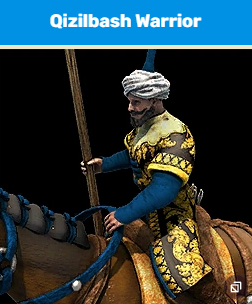DLC Proposal - Dynasties of Persia
Greetings AoE2 community!
I’d like to share a concept for a potential DLC that explores the rich and complex history of Persia, similar to how the game has expanded India (Dynasties of India) and the Slavic world (Lords of the West, Dawn of the Dukes) into distinct playable civilizations.
Persia has spanned many centuries and dynasties, each with unique military systems, beliefs, and strategies. This proposal breaks down the Persian world into three fully distinct civilizations, covering the Ancient, Medieval, and Early Modern periods.
Included Civilizations
- Sassanids - an ancient pre-Islamic Persian empire that stood as a formidable rival to Rome and Byzantium for centuries, known for its heavily armored cavalry, centralized administration, and strong economic foundation.
- Seljuks - a powerful medieval Turco-Persian dynasty that rose from the steppes, expanding across Anatolia and Persia through tactical mobility, mounted archery, and military discipline rooted in nomadic traditions.
- Safavids - an early modern Turco-Persian Shia empire, founded by a dynasty of Azeri-Turkic origin and driven by religious zeal and elite cavalry. They established Twelver Shiism as a state religion and built a centralized, charismatic military around the Qizilbash warriors.
Each civilization brings a unique military identity, a specialized unique unit, and a distinctive strategic playstyle.
- Sassanids
Era: 3rd to 7th century
Type: Defensive and economic powerhouse
Unique Unit: Asvārān – elite heavy cavalry
The Sassanids were a powerful and disciplined empire that stood toe-to-toe with Rome and Byzantium for centuries. Their elite cavalry, the Asvārān, formed the backbone of their military might — heavily armored, patient, and built for endurance.
Strengths:
- Beats Paladins in 1v1 due to superior armor and durability
- Counters infantry and foot archers effectively
- Great for defensive play and holding territory
- Excellent synergy with siege weapons as frontline tanks
Weaknesses:
- Vulnerable to pikemen and monks
- Struggles against hit-and-run tactics (e.g. cavalry archers)
- Lacks mobility for chasing or raiding
- Limited anti-building power without siege support
Building Damage:
- Moderate (similar to knights)
- Not a siege replacement, excels at protecting push units
Special Trait:
- Imperial Logistics : Villagers work slightly faster within a Town Center’s influence, reflecting the Sassanid focus on centralized economy and defensive infrastructure.
- Seljuks
Era: 11th to 13th century
Type: Mobile, harassment and map control
Unique Unit: Nöker – elite cavalry archer specialized against melee units
The Seljuks were masters of the steppes, using superior maneuverability and tactical raids to wear down slower enemies. Their Nökers were elite mounted archers, loyal to their sultan and skilled at anti-cavalry warfare.
Strengths:
- Counters Paladins, Hussars, and Elephants
- Excellent for raiding villagers and chasing siege units
- Effective against generic cavalry archers
- Good at picking off unprotected eco buildings (houses, workshops)
Weaknesses:
- Weak against Mangudai and Tatar cavalry archers
- Vulnerable to mass skirmishers or tight formations
- No real power against fortified buildings
- Mediocre in direct confrontations if outnumbered
Building Damage:
- Low, except against eco buildings and siege workshops
- Not made for base destruction, better suited to hit-and-run harassment
Special Trait:
- Steppe Coordination : Mounted units (including Nökers) gain a slight movement speed bonus when not adjacent to buildings or walls, encouraging open-field engagements and hit-and-run tactics.
- Safavids
Era: 16th to 18th century
Type: Offensive, elite and religious
Unique Unit: Qizilbash – elite cavalry fueled by zeal and morale
The Safavids forged a religious empire with the Qizilbash at its core fanatical heavy cavalry, feared for their determination and battlefield shock tactics. While fewer in number, they were fast, brutal, and terrifying to face.
Strengths:
- Defeats Paladins, infantry, and elephants in direct melee
- Effective against exposed archers
- Capable of destroying siege units and workshops quickly
- Excellent at disrupting formations and breaking lines
Weaknesses:
- Weak to pikemen and mass halberdiers
- Vulnerable to gunpowder units (Janissaries, Conquistadors)
- Struggles against Mangudai-style kiting
- Inefficient against castles, walls, and entrenched defenses
Building Damage:
- Good, especially vs non-fortified buildings
- Bonus damage vs siege units and workshops (reflecting rapid strikes behind enemy lines)
Special Trait:
- Morale bonus: Gains extra damage or attack speed when near a monk or relic, reflecting their religious zeal.
Why this DLC?
- Persia is underrepresented in AoE2 despite its massive historical influence
- This DLC follows the structure of other successful expansions: splitting a major historical region into multiple time-period civilizations
- The three civs offer complementary but distinct playstyles, from defensive tanks to raiders to elite chargers
- It would expand AoE2’s coverage of Islamic, Middle Eastern, and Asian military traditions, giving variety to campaigns and multiplayer
What do you think? Would you be interested in playing as the Sassanids, Seljuks, or Safavids in a future DLC?
Any thoughts on how these civs could be expanded further?
Let me know, I’d love your feedback!
Author : Mepho9
